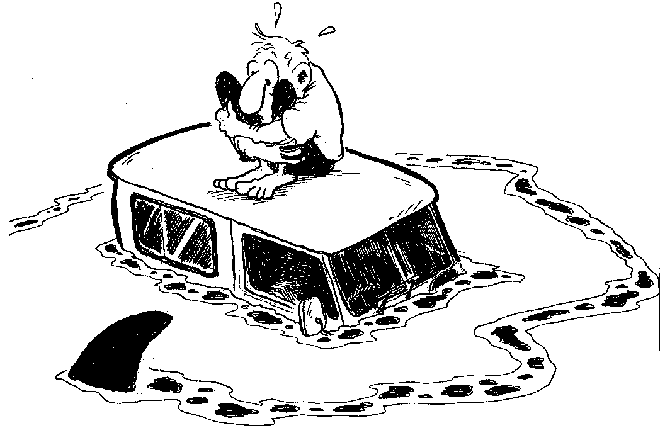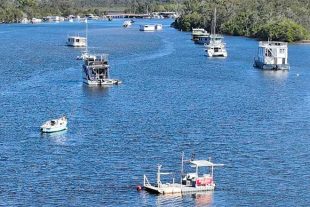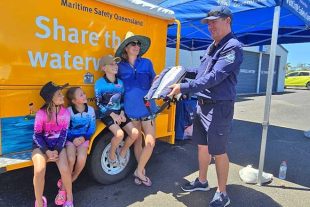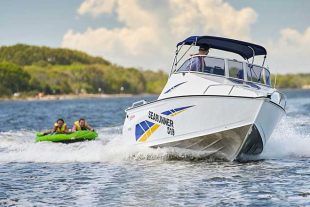G’DAY, Fred, we’ve been thinking about your phone calls to us over the years – the ones where you want to know why some of the things you have experienced haven’t been exactly as the Tide Guide predicted they would be.
How can it be the top or bottom of the tide if I can still see the tide running?
We remember that occasion too, Fred. That was when you were anchored near a beacon just inside the mouth of a river. You were fishing what the book said was the top of the tide (without much luck, if we remember correctly).
Not having much else to do, other than crack the occasional tinnie, you noticed the water was still streaming in past the beacon and did not stop running until almost an hour after the time which the book said should have been the top of the tide. I know you reckoned we were out by more than an hour on that occasion, Fred.
Or was it when you were fishing off the old bridge across the sand flats (again, you weren’t having much luck) and you could see the tide running out along the channels and draining the banks well after the time which the book said should have been low tide.
It doesn’t matter which instance we talk about, Fred, because the reason is the same. The tide rises or it falls. It does not run. What you were seeing was a tidal current, and that’s a different thing altogether. You are confusing slack water, the time when the tidal current stops flowing in one direction and begins flowing in the opposite direction, with the top or bottom of the tide.
The times of slack water do not always coincide with the times of high and low tide. This is especially apparent when the ocean is connected to a large area of land-locked water by a relatively narrow channel. The Southern Ocean funnelling through Port Phillip Heads into Port Phillip Bay is an excellent example.
The same thing can be seen to a lesser extent where the Pacific Ocean channels through the Southport Seaway into the Broadwater on the Gold Coast and in through the northern end of Pumicestone Passage near the Sunshine Coast. The tidal range on the ocean side will be greater than the tidal range in the basin behind the channel.
When high tide occurs on the ocean side, the water level there will be much higher than the level inside the basin, so water will continue to stream in long after the time of high tide. Only when the two water levels equalise (the falling tide outside drops to the height of the water inside) will slack water occur in the channel itself.
The tidal current will not stop until long after high or low tide has been and gone. The Broadwater is different to Port Phillip Bay in that it is also linked to the ocean through the southern end of Moreton Bay and Jumpinpin Bar. But at the Southport Seaway, or the Noosa Bar for a third example, another peculiarity of tides occurs – tidal currents pass one another in opposite directions at the same time.
The water police would have their work cut out directing tidal traffic here, Fred! Water held in a large shallow basin behind a narrow entrance is heated by the sun and the land mass beneath it. Even though the warm water will continue to flow out across the top of the entrance channel for some time after the low tide has been reached, the cold waters of the incoming tide will be flowing back in under what you see as the outgoing tide.
Confused, Fred? We’re not surprised. All it means is the tide has changed and is coming back in, even though it looks like it’s still going out. And if there’s been a lot of rain in the catchment area of the basin, the effect will be even more pronounced. So the next time you’re fishing an area similar to one of those we described above and you think you see the tide running out an hour or so after the time when the Tide Guide said it would be low tide, please don’t ring us and tell us we got it wrong. We didn’t. You simply misunderstood what you saw. Your eyes have been telling you porkies, Fred.
The Tide Guide managing editor Peter Layton has responded with this article to the people who’ve rung him with complaints over the years.
Cartoons by the late Mac Vines and McGookin.
 Bush ‘n Beach Fishing Magazine Location reports & tips for fishing, boating, camping, kayaking, 4WDing in Queensland and Northern NSW
Bush ‘n Beach Fishing Magazine Location reports & tips for fishing, boating, camping, kayaking, 4WDing in Queensland and Northern NSW









